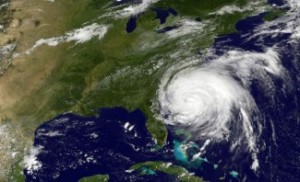Climate scenarios of the future suggest that Northeast U.S. hurricane tail risk could be higher than the historical averages suggest, according to reinsurance broker JLT Re.
 The international reinsurance broker says that its research shows that recent landfalling hurricanes in the U.S., and also in Japan, have deviated from historical norms, which magnifies the damage potential and ultimately the possible costs.
The international reinsurance broker says that its research shows that recent landfalling hurricanes in the U.S., and also in Japan, have deviated from historical norms, which magnifies the damage potential and ultimately the possible costs.
Specifically, JLT Re explored the potential for hurricane tail risk to increase on late season, high latitude hurricanes, at a recent industry conference.
Josh Darr, Senior Vice President (SVP) & Lead Meteorologist of JLT Re North America, said; “Recent hurricane seasons have seen an increase in hurricanes making landfall at high latitudes relative to the record inactive period of intense hurricane landfalls across the Gulf Coast and Florida regions. Recent land falling storms in both the northern U.S. and Japan have had a unique perpendicular landfall relative to the north/south coastlines.
“Hurricanes and typhoons tracking towards the west at landfall at high latitudes represent a configuration that has been rare in the historical record. The confluence of these rare tracks hitting major population zones represents a potential increase in risk relative to the historical record.”
According to the reinsurance broker it examined a number of areas to determine if high latitude hurricane risk is changing, which includes sand core samples tracing activity of Northeast U.S. hurricanes back 2000 years, the possible impact of global warming on dormancy of trees in relation to late season landfalls, drought, flood, and pre-landfall, and the impacts of the ability of trees to withstand strong winds, altering in jet stream patterns, sea level rises, and also the impact of research on Atlantic Ocean temperatures relative to landfall frequencies.
“While some of the variables above increase or decrease the hurricane risk, overall it appears in aggregate that hurricane risk in future decades for the Northeast is potentially higher than the historical average of the late 20th century and early 21st century,” said Darr.
Global reinsurance companies and insurance-linked securities (ILS) players specialize and excel in taking on the tail risks of today’s world, and with the risk from hurricanes potentially much higher than shown by historical averages, reinsurers and ILS players could see an increased demand for their services, but of course also the potential for higher losses.
 View all of our Artemis Live video interviews and subscribe to our podcast.
View all of our Artemis Live video interviews and subscribe to our podcast.
All of our Artemis Live insurance-linked securities (ILS), catastrophe bonds and reinsurance video content and video interviews can be accessed online.
Our Artemis Live podcast can be subscribed to using the typical podcast services providers, including Apple, Google, Spotify and more.































